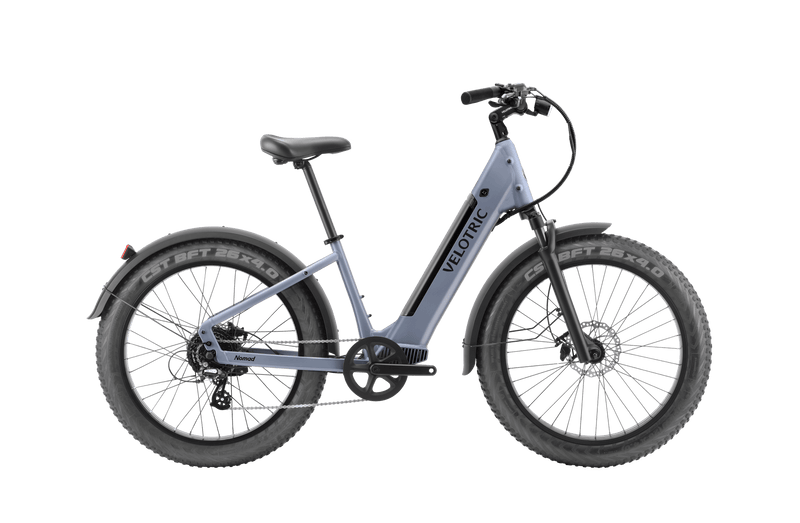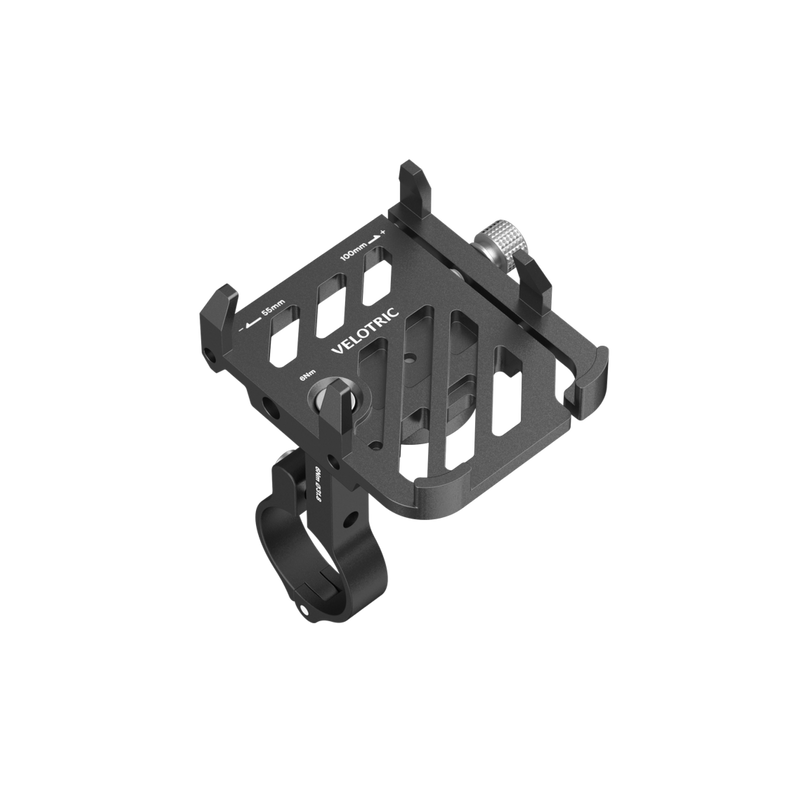The average electric bicycle weighs 20-25 kilograms (44-55 pounds). As a rule, e-bikes weigh more than traditional bikes because an e-bike frame has to incorporate a motor and battery, which a normal bike doesn’t.
But other factors impact an e-bike’s weight as well, from the motor size to the type of bike and the frame material. For example, a slim road bike with a carbon fiber frame will weigh significantly less than an electric mountain bike (eMTB) that has a steel frame and full suspension system or a heavy-duty cargo bike made for hauling.
So, why does e-bike weight matter? For one thing, it can impact your riding experience. A heavier bike will be harder to handle and maneuver. For instance, it may be too unwieldy for making sharp turns or scaling steep inclines.
You may also need to carry your e-bike on occasion, especially if you have stairs leading up to your house or apartment and need to bring it inside. It’s a good idea to know how much weight you’re going to be lugging in case you want to start doing some bicep curls at the gym to prep!
Below, we’ll go over the details influencing an e-bike’s weight. We’ll also help you determine how important weight is when purchasing an electric bicycle.
What components weigh the most on an e-bike?
On average, a non-electric bike weighs about 10 kg (22 lbs). E-bikes weigh about twice as much at 20-25 kgs (44-55 lbs) on average. They tend to weigh more because they have a few more components than a traditional bike. Let’s go over each one.
E-bike motors
An average e-bike motor can weigh anywhere from 2 to 5 kg (4.4 to 11 lbs). Electric motors contain several components that add to their weight, including wiring, magnets, a stator (the stationary part of the motor), and a rotor (the part that moves around the stator). When the battery feeds an alternating current to the motor, it creates a rotating magnetic field.
In a mid-drive motor, the motor’s shaft spins to create torque, which helps move the pedals and propel the bike forward. In a hub motor, the spinning shaft itself serves as either the rear or front wheel axle. The entire motor, encased in the wheel hub, spins and generates the torque needed to move the wheel and propel the bike forward.
The type of motor on an e-bike also affects how weight is distributed across the frame. Mid-drive motors are located in the center of the bike, while hub motors are located near the front or rear wheel.
Mid-drive e-bikes have a lower center of gravity thanks to their motors’ central placement. This adds stability when riding, making them easier to handle. Many people prefer mid-drive bikes for this reason.
E-bike batteries
The e-bike’s battery powers the motor, making it an important component that adds weight to the bike. An e-bike battery has the capacity to power an entire bike, so it tends to be somewhat large and heavy.
The average e-bike battery weighs anywhere from 5 to 9 kg (10 to 20 lbs), but the weight can vary significantly depending on the battery’s size. While smaller batteries are lighter and thus won’t add as much bulk to the bike, they also tend to have less capacity to hold a charge.
The battery’s capacity impacts the bike’s range, which refers to how far you can ride on a single battery charge. That said, it will make the bike more unwieldy when riding.
So, when choosing an electric bike, it helps to ask yourself: Do you want a heavier battery that adds extra weight but lets you cycle for longer? Or, do you want a smaller battery with a shorter range, but which gives you a lighter bike that’s easier to maneuver?
E-bike frames
Finally, the largest part of your e-bike to consider is the frame. Unlike a regular bike frame, An electric bicycle frame needs to accommodate the added weight of a motor, battery, and connecting components. As a result, an e-bike frame needs to be more robust, which usually means heavier.
However, e-bike frame weights can vary widely between the many types of e-bikes available. Velotric’s bikes are a great example. We’ll detail a couple of options, each with its unique benefits.
The Discover 1 is an urban commuter bike. It comes in two frame types: a high-step frame weighing 65 lbs and a step-thru frame weighing 63.5 lbs. The Nomad 1 likewise comes in two frame types as well, but they weigh more: the high-step frame weighs 73 lbs, and the step-through frame weighs 72 lbs.
So, why does one option weigh around 10 lbs more than the other? The Nomad 1 is a fat tire electric bike made for off-road adventures. As a result, it has a larger frame and wider tires, which add weight.
A bike frame’s material can also influence weight. The lightest option will be a carbon frame or titanium frame, but these are both likely to be more expensive. The average weight of a steel or aluminum bike frame will be higher, but they’ll come at a lower price.
Is a lighter e-bike really always better?
Now that you know why e-bikes are heavier than normal bikes, you might be wondering if a lighter e-bike is the right choice for you or if a heavier option might be better.
Your first instinct might be to opt for a more lightweight e-bike model. On the plus side, this will improve maneuverability while cycling and be easier to carry as needed.What’s not to like?
Well, a lighter bike usually means a less powerful motor and a smaller battery, meaning diminished capacity and less range. That means you won’t be able to ride as far before you have to stop to charge up again.
So, if you don’t plan to ride your bike for long distances at a time, a more lightweight e-bike might be a great option. Otherwise, it might be wise to consider one with more power that holds more of a charge.
The best e-bike weight depends on how you plan to ride
When deciding which e-bike weight is right for you, the most important thing to consider is what you’ll use it for.
For example, a lightweight bike makes more sense if you’ll primarily use it for biking to and from work daily and your commute doesn’t require you to travel long distances. You don’t need a huge battery capacity and will enjoy easier handling as you zip through the city streets.
But if you’re looking to explore the great outdoors on longer bike rides, you might want a more powerful motor and better battery capacity. An e-bike like this is likely to be heavier.
Discover the versatile e-bike options from Velotric
The average weight of an electric bike is about twice that of a normal bike. The higher overall weight comes primarily from the fact that an e-bike needs to accommodate a motor and battery, which requires a more heavyweight frame for support.
Cyclists trying to decide between a lighter option versus a heavier e-bike have to decide what’s right for their needs. While a lightweight e-bike is easier to maneuver, it will probably have a less powerful motor and less battery capacity than a heavier e-bike.
That said, the weight of an e-bike is only one of several factors to consider when shopping for an e-bike. You’ll also want to look at all the technical specifications as well as the comfort and safety features to ensure it’s right for you.
Velotric’s e-bikes cover all the essentials. Our bikes come with pedal assist and throttle assist functionality, 7-speed Shimano derailleurs, hydraulic disc brakes, and a battery that fully charges up in just six hours.
Our Discover 1 commuter e-bike is perfect for urban cycling, while our Nomad 1 fat tire e-bike can take you into the great outdoors. Check out your options today.







































